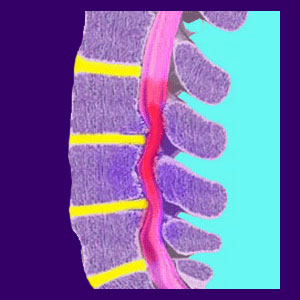
Myelomalacia is a general term for spinal cord damage involving hemorrhaging and the subsequent softening of normal tissues. This spinal cord bleeding condition can come about for many possible reasons, but is always a devastating diagnosis which may lead to serious and often permanent disability or even death. Like all spinal cord injuries, the condition is difficult to treat and almost impossible to repair, offering patients little hope for true recovery from the lingering effects imposed upon them.
This discussion takes an in-depth look at the various causes of spinal cord bleeding, as well as the symptoms most commonly associated with the condition.
What is Myelomalacia?
The exact medical term can mean different things, depending on the reason why the condition exists. In virtually all cases, the condition involves bleeding within the actual spinal cord due to trauma, disease process or other pathological event.
This condition may become worsened if the bleeding begins to ascend the spinal cord (called an ascending lesion) and reaches the upper cervical levels, where it can prove fatal. In some cases the blood can accumulate inside the spinal cord causing additional damage to sensitive neurological tissue due to built up pressure. In a few instances, the bleeding can cause tissue to become necrotic, offering dismal chances for recovery.
In even worse circumstances, the hemorrhagic site can become infected, which is also a terrible occurrence leading to potentially dire effects.
Causes of Spinal Cord Hemorrhage
Here are some of the many possible causes and contributors to a bleeding spinal cord condition:
Spinal syrinxes can form a bleeding condition and blood accumulation can also cause syringomyelia. When a fluid filled cavity forms in the spinal cord, there is always cause for extreme concern, regardless of whether the liquid is blood or cerebral spinal fluid.
Traumatic injury, such as badly fractured vertebrae, can cause bleeding if bone fragments lacerate the spinal cord tissue.
Some forms of back surgery can result in bleeding and necrosis in the spinal cord. This is one of the most severe possible complications of spinal operations.
Osteoporosis can cause spinal instability in the elderly, possibly contributing to the hemorrhagic condition if the spine collapses or if a bone shard traumatizes the cord.
Specific circulatory issues can result in ischemia of sections of the spinal cord, causing tissue deterioration and eventual hemorrhaging.
Myelomalacia Factsheet
A bleeding spinal cord can be accurately diagnosed using MRI or myelography testing. Symptoms of the condition may or may not be present while bleeding is new, but are likely to increase over time or even begin many years after an original spinal cord injury has occurred.
Patients may suffer a variety of effects ranging from pain to muscular dysfunction, loss of bowel or bladder control, partial or complete paralysis and even the inability to breathe correctly or at all.
Regardless of the source of bleeding and subsequent spinal cord softening, the higher the level of damage occurs, the worse the effects will typically be. However, do not forget that even lumbar lesions can ascend upwards and become life threatening concerns. Always seek care for any spinal cord issue from a dedicated specialist in central nervous system neurology.




